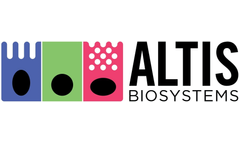Intestinal Mucosa Articles & Analysis: Older
7 articles found
Meanwhile, as an important signaling molecule, bile acids can activate the relevant receptors to maintain the homeostasis of hepatic glucose and lipid metabolism, and interact with gut bacteria to regulate the development of the intestine and the inflammatory response of the body. Inflammatory responses in the body, etc. ...
As ingested dietary fats make their way to the small intestine, they arrive as large, unwieldy fat droplets. Here, bile acids perform their first act: emulsification. ...
Diamine oxidase (DAO) is an intracellular enzyme that catalyzes diamine in mucosal or ciliated epithelial cells of the mammalian small intestine. It protects the intestinal mucosa by regulating intracellular ion homeostasis, influencing conduction pathways, and promoting cellular repair. ...
Primary bile acids are secreted into the intestine and undergo 7α dehydroxylation by intestinal bacteria to form secondary bile acids. ...
Adults parasitize in the small intestine of cats, dogs and humans. The larvae can invade lung, brain, liver, kidney and other tissues and organs, causing strongyloidiasis. ...
Lactase is a disaccharidase present on the surface of mammalian small intestinal mucosal microvilli, and many beneficial intestinal bacteria have the ability to produce lactase. ...
Limitations of Animal Models Rodents are commonly used as in vivo animal models of the human intestinal system, but these models do not completely mimic the human intestine, as they fail to recapitulate structural anatomy and lack some of the receptors and cells types found in humans. ...




